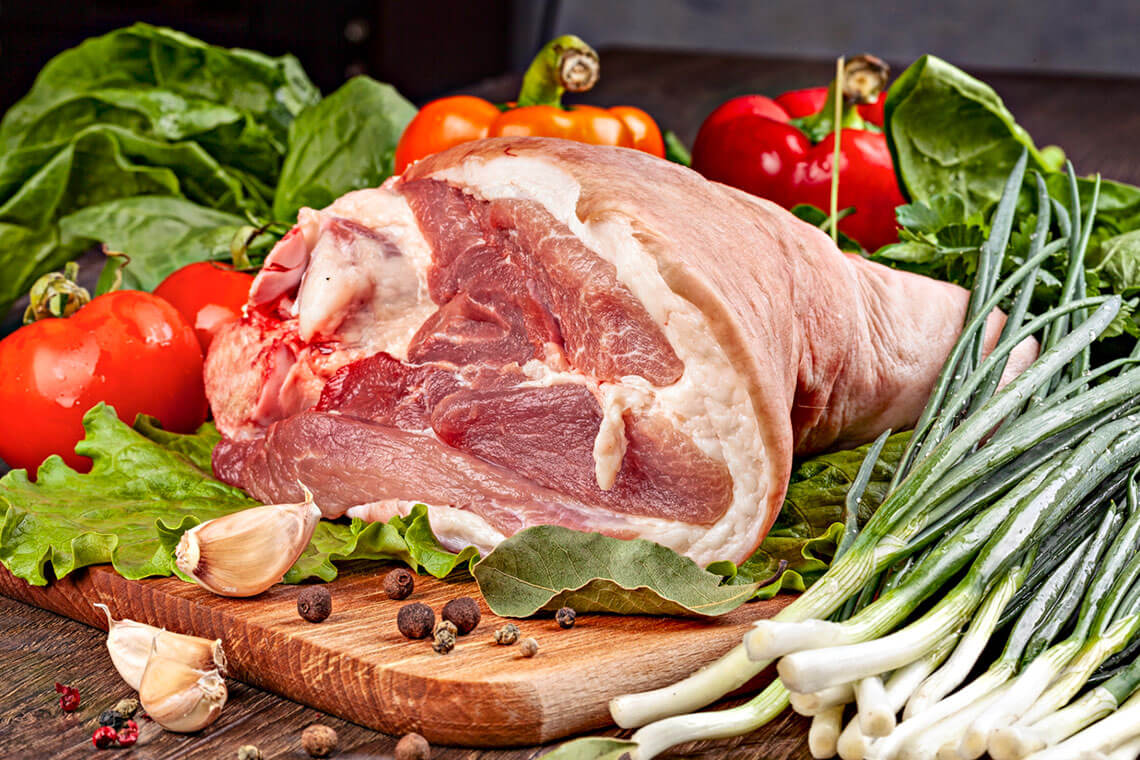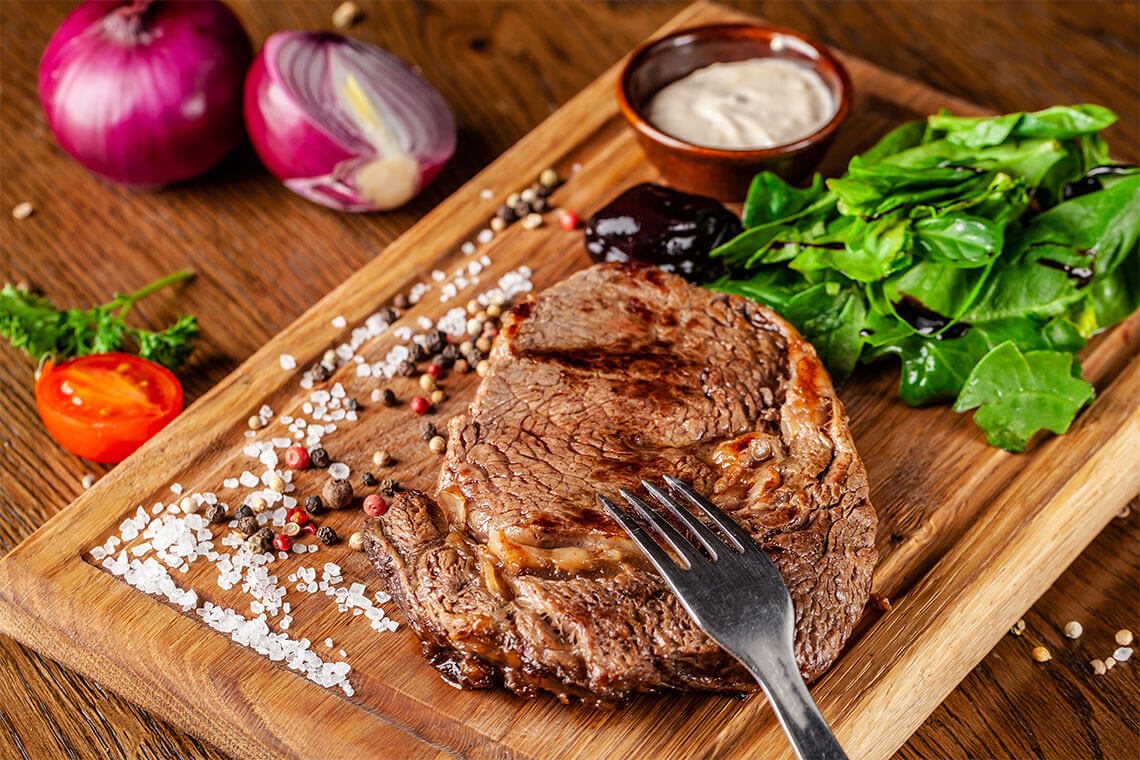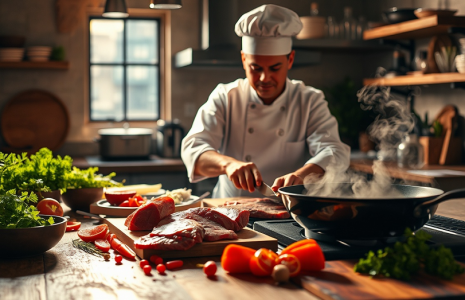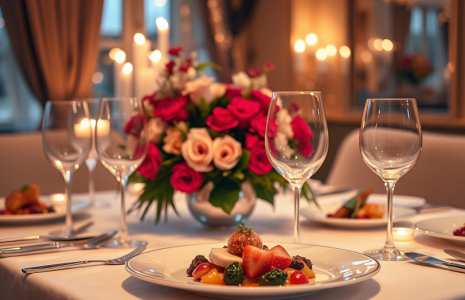International BBQ techniques in Chicago are redefining how restaurants craft summer menus. From Korean kalbi’s sweet-savory flavor to Argentine asado’s ember-fired tradition and Japan’s precise yakitori skewers, global BBQ is bringing bold new flavors to local diners.
This guide explores how three international BBQ techniques can be used in Windy City restaurants and provides wholesale meat insights for implementing these methods in your establishment.
Quick Reference: Three International BBQ Techniques
- Korean Kalbi: Flanken-cut short ribs, sweet-soy marinade, interactive dining
- Argentine Asado: Grass-fed cuts, ember cooking, chimichurri pairing
- Japanese Yakitori: Whole bird utilization, binchotan charcoal, precise technique
How International BBQ Styles Are Shaping Chicago’s Menus
Seoul Fire in Windy City Kitchens
Korean Kalbi has a welcome home in local venues, for good reason. The technique centers on flanken-cut beef short ribs marinated in a soy, sugar, garlic, and sesame oil mixture.
It offers an irresistible mix of sweet, umami, and charred tones, resulting in meat with crisp, caramelized edges that hold up adequately over open flames.
The style offers a hands-on, sharing vibe that is appealing to diners looking for a bold and sociable meal. In several hotspots, including Chicago Kalbi, you’ll find this popular spicy food.
Serve your Korean barbeque with rice and a variety of Banchan (side dishes), which add contrast and texture. Start with Kimchi, fermented napa cabbage, and refreshing pickled radish, often served chilled. Include greens with Sigeumchi Namul and seasoned spinach topped with garlic and sesame oil.
Additional salad options include Oi Muchim, a spiced cucumber salad, and Kongnamul, a soybean sprout salad that offers a nutty crunch texture. Flanken-style short ribs are a wise choice for marinade-ready, versatile, cost-effective summer BBQ menus.
Traditional Korean beverage pairings include low-alcohol-by-volume Soju, a go-to spirit that’s clean and slightly sweet. Makgeolli is an unfiltered rice wine with a creamy texture that matches well with fatty meats. For beer lovers, consider offering light Korean lagers, such as Hite or Cass.
Other recommended wine choices for Kalbi include dry whites that pair well with soy-based marinades, such as a dry Riesling or Gewürztraminer. Light-bodied reds with some acidity match up with marinade and char flavors, such as Pinot Noir.
For an added kick, suggest a Whisky Highball with your favorite Japanese label for a crisp, palate-cleansing finish.
When diners prefer pork over beef, some chefs apply the Kalbi marinade to Spare Ribs and Baby Backs.
Argentine Beef & Embers
A ritual built around premium grass-fed flank steak, Argentine Asado-style cooking requires a patient, low-and-slow grilling technique using glowing hardwood embers as the heat source. The approach allows natural flavors to develop as the signature smoky crust emerges.
You’ll often find fresh Chimichurri sauce paired with the steak for a fresh, herbaceous contrast. Sides may include Provoleta, grilled provolone cheese seasoned with oregano and chili flakes, and topped with tomato.
Ensalada Criolla, a tossed salad featuring fresh tomatoes, onions, and peppers, topped with olive oil and vinegar dressing, also pairs well. Additionally, Papas al Plomo (fire-roasted potatoes) is a great accompaniment.
Certain vegetables cook well directly over a flame or in cast-iron pans, with red peppers and zucchinis leading the way due to their high vitamin content and complementary taste.
Don’t forget fresh bread and baguette slices to soak up the delicious juices. Check menus at Artango and El Che when the craving for delicious South American-influenced BBQ hits.
Japanese Flame-Crafted Poultry
Yakitori is Japan’s version of grilling, and it’s prominent in Chicago’s summer dining scene.
In this technique, chefs use small cuts of chicken and duck on a skewer, cooked slowly over traditional Japanese charcoal made from ubame oak, called Binchotan. This slow-growing hardwood, native to Japan, offers traits that make it perfect for kebabs and Yakitori.
It burns cleanly and hot, reaching temperatures near 1,000℉ with no chemical odors, minimal smoke, and a delicate heat transfer that retains meat’s natural flavors, perfect for tableside grilling. Binchotan is also cost-effective due to its reusability if extinguished properly.
Yakitori humanely uses the whole bird, including the skin, liver, and heart, so there’s no waste. Commonly offered individual chicken cuts include thighs, breasts, and wings.
Yakitori Duck is less common but gaining popularity, and cuts include the breast and leg. Using the entire bird allows chefs to create a balanced skewer menu, ranging from heavy to lean portions, with bold and fatty flavors, ideal for customers seeking variety. Locally, you’ll find Japan’s Yakitori at Shinya.
Begin the meal with a comforting and light bowl of dashi-based Miso soup with scallions and seaweed. Or perhaps grilled Tofu Dengaku, often served as a shared appetizer or a munchie between skewer pieces. Salted or grilled Onigiri (Rice Balls) stuffed with tuna and pickled plum provide a filling, textured balance.
Where to Source Meats for International BBQ Techniques in Chicago
Before adding new menu selections, stock your venue’s freezer with premium wholesale cuts from Northwest Meat Company. We’ll provide your restaurant, hotel, food truck, bar, or country club with the freshest options available for any globally inspired BBQ menu.
Our sourcing partners share our family’s goals of using sustainable agricultural methods, strict quality standards, and unmatched service levels.
These international BBQ techniques—Korean kalbi, Argentine asado, and Japanese yakitori—each bring unique flavors and cultural experiences to Chicago’s summer dining landscape. Whether you’re drawn to kalbi’s interactive sharing style, asado’s patient ember cooking, or yakitori’s precise charcoal technique, each method offers distinct advantages for engaging summer diners seeking authentic global flavors.
Ready to order? Visit our website to browse our products, order directly through our app, or get personalized assistance by calling our sales team.
























